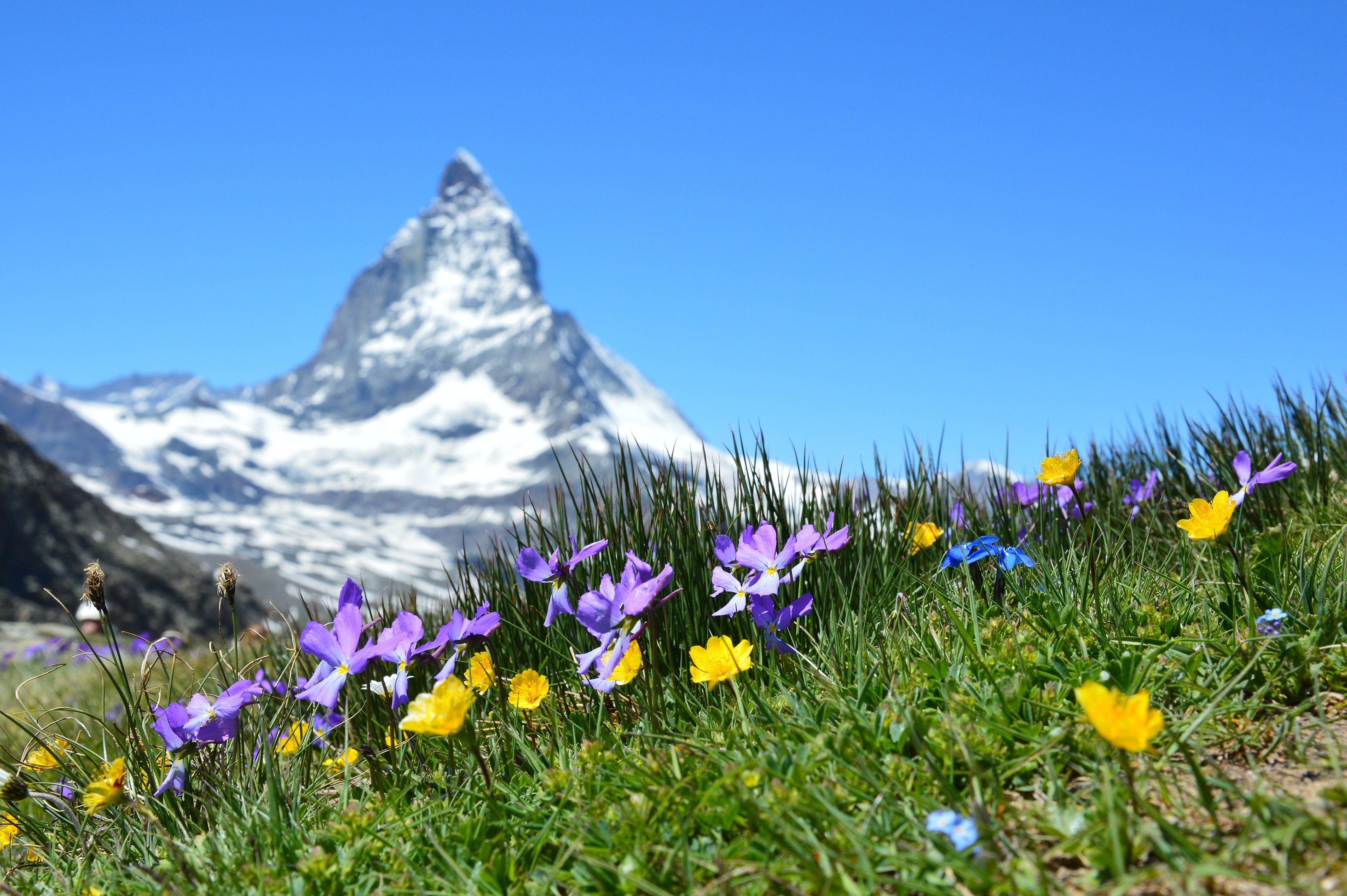Photo-Worthy Spots to See Canadian Alpine Wildflowers
Whether you’re running along BC’s iconic mountain trails or trekking through Alberta’s Provincial Parks, alpine wildflowers provide a stunning backdrop for any mountain-top adventure.
Western Canada may be famous for its snow-capped mountain peaks and world renowned ski resorts, but during the summer months, British Columbia and Alberta are also home to some of the best hiking, climbing, and cycling spots in the country. Once the snow melts and the days grow longer and hotter, Canada’s mountain ranges are transformed into blankets of colourful wildflowers. In the summer, visitors can spot up to 4,000 flowering plants across the mountaintops, and are bound to come across many of these thousands of native wildflower species.
While some alpine wildflowers appear year-round, others only bloom between June and August. Whether you’re running along BC’s iconic mountain trails or trekking through Alberta’s Provincial Parks, alpine wildflowers provide a stunning backdrop for any mountain-top adventure. The following locations are ideal for spotting some of the most vibrant, Instagram-worthy wildflower settings in Western Canada.
Garibaldi Provincial Park, BC
Summer visitors to Squamish and Whistler can experience the full effect of BC’s beautiful mountain and glacier views at Garibaldi Provincial Park. Located only 70km north of Vancouver, Garibaldi offers breathtaking hikes from June to October. A trip to Garibaldi Lake at the centre of the park takes around 5 to 7 hours round trip, with other shorter hiking trails providing equally breathtaking scenery. For those looking for prime alpine flower photography, the peak of wildflower season tends to be in August.
Waterton Lakes National Park, AB
Waterton Lakes National Park is located in southwestern Alberta and shares a border with Glacier National Park in Montana. Waterton is open year-round, but attracts the most visitors in the summer. The popular Waterton Wildflower Festival takes place throughout the park in late June and annually celebrates the title of Canada’s Wildflower Capital. Guests visiting Waterton can explore and identify the dozens of rare wildflowers exclusive to the area, while being surrounded by sprawling views of the Canadian Rockies.
Banff National Park, AB
The peaks of the Canadian Rocky Mountains in Banff National Park are havens for alpine hiking enthusiasts and nature buffs. Attracting visitors from across the globe, Banff National Park provides highly-rated day hikes in Sunshine Meadows, lakeside hikes to Bourgeau Lake, and rugged paths along the Icefields Parkway. Lined with forget-me-nots and other wildflowers, Banff National Park is also Canada’s oldest national park and neighbours some of Western Canada’s best peaks.
Athabasca Glacier, AB
Located between Jasper National Park and Banff National Park, Athabasca Glacier is the most visited glacier in North America. This glacier is one of the toes of the Columbia Icefield, and attracts visitors for lakeside and waterfall views in addition to the famous cliff-side Glacier Skywalk. In the summer, plant life and wildflowers are abundant and beautifully frame the snow-capped mountain landscape.
Whistler, BC
The Whistler and Blackcomb Mountains are home to BC’s most famous ski resort. In the winter, the slopes are brimming with locals and guests to the area, while in the summer, Whistler Village booms with travellers and residents seeking lush nature walks and breathtaking sightseeing opportunities. There are plenty of chances for hikers to spot alpine wildflowers in Whistler, as they line pathways and trails and spill over the mountain top.
Sun Peaks, BC
Known for its alpine ski resort 56 km from Kamloops, BC, Sun Peaks provides a multitude of summer activities for visitors and local mountaineers. In addition to operating a downhill mountain bike park and opening its golf course and tubing area, the bright and arid BC Interior climate allows for ideal trekking through the trails. Guests in the area have access to sprawling fields of colourful alpine wildflowers, and can try to identify the many species they come across.

